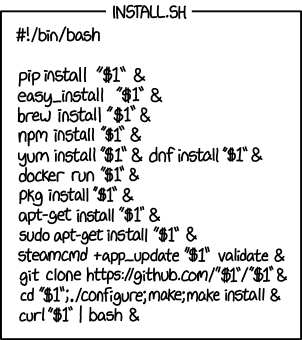The news is now out: http://venturebeat.com/2016/03/10/robert-scoble-leaving-rackspace-for-uploadvr-to-explore-augmented-and-virtual-reality/ I’m joining Upload VR, details here…
What a seven years it was working at Rackspace, much of it as its futurist.
As you know, for the last seven years you’ve seen me hop around the world visiting innovation labs, conferences, startups, and other places/companies that could tell me something about where the future is going. I’ve built relationships all over the world and brought Rackspace to many new companies and places but there are deep shifts coming in our society due to new technologies and it’s time to make a career change.
Not to mention I was one of the most recognizable faces at a multi-billion-dollar public company with 6,000 employees and successfully helped it build its brand on social media and on the world’s most important stages.
Today I’m announcing that I’m leaving Rackspace to join Upload VR http://uploadvr.com/ — a new media site covering virtual and augmented reality — as its entrepreneur in residence, where I’ll be developing new shows, events, and working with other entrepreneurs in the Upload Collective, a coworking space for virtual reality-focused startups. In particular working with Upload’s cofounders Will Mason and Taylor Freeman.
Why?
Well, two years ago, at Web Summit in Ireland, I watched many people get their first look at Oculus Rift. Nearly everyone came out of the demos with a stunned look on their face and most used expletives to describe their experiences. Me too. I’ve seen that happen dozens of times since, including last weekend in Cape Town, South Africa, where a local entrepreneur threw a VR party in my honor and many people got their first experiences with VR, which is why I posted this video as part of this post.
It is clear to me that there are new opportunities to build companies in the VR space (duh, just look at the billions of dollars of investment) and the Augmented Reality wave that will follow VR will be even bigger. I wanted to be in a place where I’d have the freedom to create businesses, or at least be part of a media team that was focused on this future.
In the past six months it’s been clearer and clearer that Rackspace was undergoing its own shifts, toward supporting more enterprise customers who were moving existing datacenters to clouds running at Amazon or Microsoft. VR and AR didn’t yet matter to them, at least not to the bottom line. At least not yet and probably won’t make a difference in the bottom line for three years.
As a media guy, though, I know that in three years the market window will have closed. If there will be new brands, and I believe there will be, or new shows, documentaries, conferences, blogs, worlds, whatever you want to call them, they will all be built in the next three years.
I just didn’t want to sit on the sidelines and Rackspace couldn’t invest in me internally to do such. That’s not how companies work.
So, today, I’m announcing that I’m leaving Rackspace to be entrepreneur in residence at a new media property that you might have heard of. Upload VR http://uploadvr.com/ is my favorite place to learn about new VR headsets, products, experiences, games, cameras, and more.
I’m writing a separate post about what Rackspace, and, in particular, my boss, Robert D. La Gesse, meant to me over the last seven years. It’s been such an honor to be a public face of a public company and, especially one that has such an important role in the tech industry with hundreds of thousands of customers.
Some QA:
Q. What does Rackspace think of this? Were your bosses disappointed?
A. Rackspace invested in me to go follow my dreams and passions. We both are friends and you may see Rackspace involved in what I do in the future. They also gave me my newsletter, content rights to use as I see fit. This move made sense for both sides. We’ve been working on this for a while and figuring out what my future might look like.
Q. How are you going to be compensated?
A. I’m in a very fortunate position because I’ve been asked to speak to corporate events all over the world. I have a new speaker management company, ODE Management, and they are quite positive that there’s enough demand out there for me as a speaker that I don’t need to worry about that short term and that I can work with Upload easily while doing so. That said, I’ll be working on making a series of businesses, including a new book, “Beyond Mobile” that I’m writing with Shel Israel, so I’ll open up new sponsorship and advertising possibilities in the future. More on those soon. I’m also open to new business opportunities, if you have one let’s talk!
Q. What does this mean for what you are doing on social media?
A. You probably won’t see many changes, at least not soon. My Facebook will keep being full of industry news and things that catch my eye. I will still visit with many entrepreneurs and others, albeit with more of a VR/AR focus now. Same on Twitter, SnapChat, LinkedIn, and Google+. They will get my newsletter, like I’ve been doing the past year. Some changes you might notice is that my blog will start up again and I’m playing with some ideas for YouTube, but more on those later in the year.
One idea that I’m noodling on is doing social media consulting, though. Dale Bracey (he worked at Rackspace on the social media team) and I are thinking that through. A lot of the world still doesn’t understand how to use social media well and Dale was amazing at doing the dirty work of what I call “defensive social media” (helping customers out on Twitter and other places) while I did the “offensive work” of building brand, and building storytelling devices for Rackspace (like I did at Microsoft too). I’m working with brands to come up with some ideas, if you have advice or need that kind of service, drop us a line at scobleizer@gmail.com
Q. What will my role as EIR at Upload entail?
A. I’ll be working with the Upload Collective team to help find other great startups to join me in the space, along with thinking through its event strategy for 2017. This is one reason why I wanted to join as an EIR, it would give me time after leaving Rackspace to have discussions with a number of companies without the constraint of worrying about appearances. Being a public representative of a public company does tend to limit the kinds of discussions one can have without causing rumors, brand destruction, or stock price consequences, so this change frees me to work with the marketplace on a number of different initiatives. Want to have a chat? Please contact me at scobleizer@gmail.com or on Facebook at https://www.facebook.com/RobertScoble
Q. What will you be doing this weekend at SXSW?
A. I’ll be attending the Upload VR Mixer on Sunday night. I’ll also be hosting a “Beyond Mobile” VIP breakfast for VIP brand representatives on Sunday morning (sorry, that’s sold out). Plus speaking at several events and doing my own reporting on how the VR/AR space is evolving here at SXSW. Am on a panel during the VR day on Thursday with several VR pioneers. Plus having a little fun at the concerts in the evenings and many dinners and parties I’ve been invited to.
Q. Will this mean you will focus exclusively on virtual reality?
A. No. I’m going to continue to cover “Beyond Mobile” technologies, including additive manufacturing, IoT, robots, self-driving cars, artificial intelligence, and other technologies that change our future, all hitting in the next decade. I’m especially interested, though, in VR and AR, and how our culture is deeply changing due to these new technologies. In fact, one advantage of this move is I can spend more time working with Shel Israel on our book, “Beyond Mobile,” which will ship in December. We’re still looking for more sponsors for that, by the way. We’re looking for companies who want to position themselves as leaders in the “Beyond Mobile” space.
Q. Why Upload VR?
A. While most people haven’t heard of Upload, it is my favorite site of those covering the upcoming virtual reality and augmented reality spaces. Plus they have a great office in downtown San Francisco where they are hosting several startups with more coming soon.


.gif)























